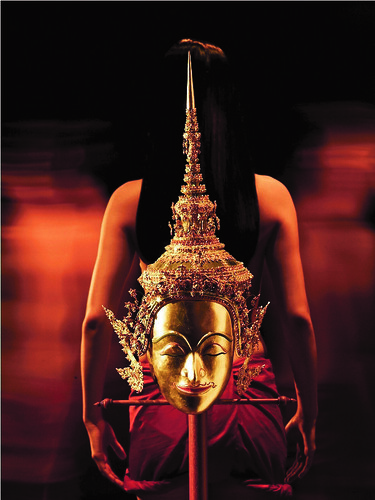 What is your technique?
What is your technique?
For this exhibition, low shutter speeds create abstract movements in relation to the story, causing a trace of movement of the face, feet, or other parts of the body. The medium used is a digital medium format Hasselblad camera and studio lights. There was no merging of images. This is a traditional technique of photography.
What was your source of inspiration?
I got my inspiration from meeting people with different stations in society, be it actors, singers, directors, playwrights, politicians, ministers, Red Shirts, Yellow Shirts. Everybody plays their roles differently in different situations. From that I got the idea that one’s status confers a particular role to an individual. Our status makes us act in certain ways and makes other people expect us to be something. These things act like a mask that makes us who we are.
Tell us a bit about this photo, Man Khon The Queen. Why is it shot from the back?
This is after the quarrel over the khon has finished. The woman in the picture now has full possession of the mask and the queen’s crown, looking back at the moving people before stepping forward to her new status in which she has to rule with compassion and ethics. This picture illustrates the episode before she has real power, when she isn’t wearing the khon yet.
Were they performing when you took the pictures? Or were the pictures staged?
There wasn’t a real Khon performance. Of all the actors, some are khon players, but some are Thai traditional dancers and some are contemporary dancers. I had studied the various movements before actually taking the pictures. I would assign different movements in each photo, each with a hidden meaning. The preparation involved more than 40 sketches before the real photo session even happened. Interview by Vasachol Quadri and Natthanun Prasongchaikul
Advertisement















